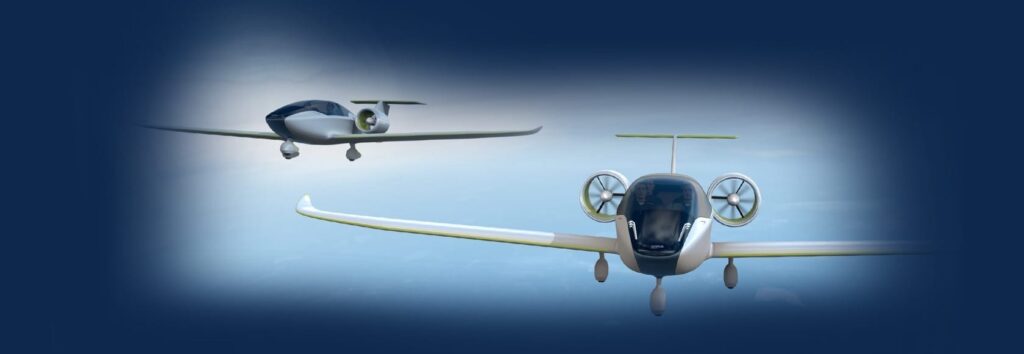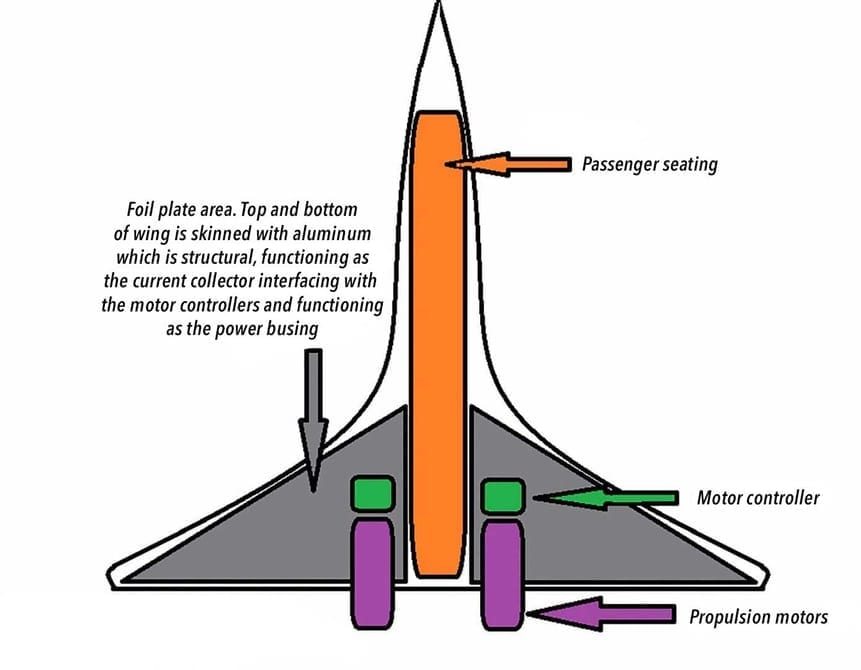
By using electric and hybrid forms of propulsion, very different-looking aircraft may end up taking to the sky
WHEN Didier Esteyne, an Airbus test pilot, flew a small two-seat electrically powered aircraft called the E-Fan across the English Channel in July, the giant European aerospace group was keen to point out the journey was not a gimmick. Indeed, Airbus is serious enough about electric flight to want to put the E-Fan into production as a pilot-training aircraft. It will go on sale towards the end of 2017 to be followed by a four-seat version.
Airbus is not alone in thinking about making much bigger electric and hybrid aircraft to carry passengers. Just as in cars, electrical propulsion offers a number of advantages over piston and jet engines. Modern, digitally controlled electric motors supply lots of torque, a rotational force which is as good at turning propellers and fan blades as it is wheels. Electric power is also quiet, clean and highly reliable, with fewer engine parts to wear or break.
Batteries, it is true, do not provide the range many would like: lithium-ion ones allow the E-Fan to fly for about an hour with a 30-minute reserve. That may be fine for a flying lesson, but not for a passenger airliner. Batteries, though, are steadily improving and, because aircraft have long service lives (the Boeing 747 first flew in 1969), aerospace engineers work on projects set well into the future.
What really excites them about electric propulsion is that it provides the opportunity to build radically different aircraft, like the Airbus E-Thrust concept illustrated above. The idea is that instead of hanging big and heavy jet engines below the wing, a greater number of small and lighter electrically driven fans or propellers could instead be incorporated into other areas of an aircraft. Doing this with lots of small conventional engines would be complicated and would add a lot of weight. But electric motors make the concept, called distributed electric propulsion (DEP), feasible. The advantage of distributing power is that it can be used to increase the airflow over the wings and thus allow an aircraft to fly more efficiently. “DEP enables a fundamental shift in how we design aircraft,” says Mark Moore, a principal investigator into electric flight at NASA’s Langley Research Centre in Virginia.
Read more: Future aircraft – Electrifying flight
The Latest on: Distributed electric propulsion
[google_news title=”” keyword=”Distributed electric propulsion” num_posts=”10″ blurb_length=”0″ show_thumb=”left”]
via Google News
The Latest on: Distributed electric propulsion
- China’s third aircraft carrier Fujian tests power, navigation in maiden sea trialon May 1, 2024 at 9:33 am
No aircraft were visible on the carrier’s deck in official images and videos, with testing of its electromagnetic launch catapults expected in later trials.
- What Is An “eVTOL”?on April 30, 2024 at 8:16 pm
Electric vertical takeoff and landing (eVTOL) aircraft are nearing certification, after 15 years of development. What makes these advanced air mobility platforms unique?
- ZeroAvia’s new Everett center ‘a huge step in decarbonizing’ aviationon April 25, 2024 at 6:32 am
The British-American company, which is developing hydrogen-electric powered aircraft, expects one day to employ hundreds at the site.
- ABB to Provide Hybrid-electric Propulsion for MaineDOT Ferryon April 23, 2024 at 6:06 pm
ABB has been selected by Maine Department of Transportation (MaineDOT) to supply a comprehensive grid-to-propeller solution for the new ...
- Electra’s eSTOL: Military Logistics Game-Changer Takes Flighton April 20, 2024 at 11:18 pm
Electra’s groundbreaking eSTOL (electric short takeoff and landing) aircraft has garnered attention for its potential to revolutionize military logistics. Recognizing its significance, the US Army has ...
- 5 Electric Planes That Will Take You To The Skies Soonon April 20, 2024 at 10:45 am
As aviation is responsible for significant CO2 emissions, the industry is striving to clean up its act. Here we look to the future with five electric planes.
- Electra Gets Almost $2M From the US Army for Wind Tunnel Testson April 19, 2024 at 2:24 am
The Northern Virginia startup claiming to have developed a revolutionary eSTOL was awarded $1.9 million by the US Army for wind tunnel testing ...
- US Army entertains short take-off and landing capabilities of Electra’s aircrafton April 18, 2024 at 9:55 am
The US Army is exploring potential use of Electra's hybrid-electric short take-off and landing aircraft (eSTOL) aircraft for logistics in contested environments.
- This crazy 2-in-1 electric vehicle comes equipped with 2-seat aircraft hidden insideon April 18, 2024 at 3:00 am
The Land Aircraft Carrier combines an all-terrain, six-wheeled vehicle with a two-seat aircraft, which features electric vertical takeoff and landing.
- DLR Develops Digital Design Tools For Hydrogen Aircrafton April 17, 2024 at 6:37 pm
German aerospace center DLR has launched a three-year research project to develop a digital environment to automate the design and accelerate the development of future aircraft with hydrogen-electric ...
via Bing News











